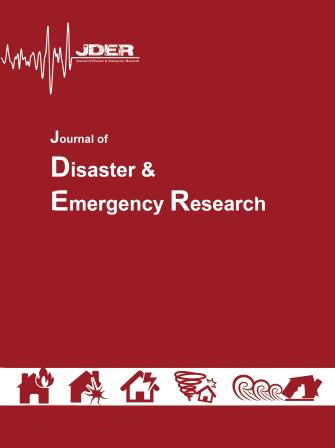Document Type : Letter to The Editor
Authors
1 Department of Health in Disasters and Emergencies, School of Management and Medical Informatics, Iran University of Medical Sciences, Tehran, Iran
2 Department of Nursing, Faculty of Nursing and Midwifery, Iran University of Medical Sciences, Tehran, Iran
Abstract
No Abstract
Keywords
|
|
of Zahedan, the capital city of Sistan and Baluchistan province in Iran, caught fire at 9 a.m. on December 18th, 2018. This incident led to the death of four girl students (1). Fifty-nine students were studying in the school that all of them were
rescued by the help of people and firefighters. However, four of the students were stuck in a class for a long time. Unfortunately, these students were burnt more than 90% and they died after being taken to hospital due to the severe burn and breathing problems. According to the conducted survey and the claim of the fire department, using oil stove in the class was the main reason of fire incident despite the fact that using such oil stove was prohibited in this country. Besides, the corridor between the classrooms was narrow that made it difficult to pass through it and the wooden desks caught fire and its flames spread to the windows.
The factors that increase the vulnerability of school classrooms to the fire include: window railings that make emergency evacuation difficult and sometimes impossible, use of oil stove and wooden desks. Awareness, education, and training have an important impact on the safety promotion and injury prevention, representing the best opportunity for long-term modification of fire safety culture over time (2).
The lessons learned from this fire incident have demonstrated safety principles in school that are crucial and schools should be prepared to response to the disasters effectively. Table 1 illustrates the list of fire cases in Iran’s school during the recent 20 years (3).
Table 1. A list of fire cases in school during the recent 20 years in Iran
|
Place of fire |
Year |
Reason |
Casualty |
|
A school in Shaft city, Gilan Province |
1998 |
Oil Stove |
12 Injury |
|
A school in Sefilan village |
2004 |
Oil Stove |
12 Injury, 1 Death |
|
A school in Dorodzan village, Gilan Province |
2006 |
Oil Stove |
8 Injury |
|
A school in Zahedan |
2010 |
Connection of electric wires |
14 Injury, 1 Death |
|
A school in Chabahar |
2011 |
Oil Stove |
2 Injury, 3 Death |
|
A school in Shinabad village, Piranshahr city |
2012 |
Oil Stove |
29 Injury, 2 Death |
|
A school in Khorramshahr city |
2012 |
Oil Stove |
1 Injury |
|
A school in Hashtrood city |
2014 |
Oil Stove |
1 Injury |
|
A school in Zahedan city |
2018 |
Oil Stove |
4 Death |
|
A school in Zahak city, Sistan and Baluchestan Province |
2019 |
Oil Stove |
1 Injury |
Some suggestions for school’s preparedness
for fire include establishing and implementation
of the laws and regulations, consideration and allocating sufficient budget for safety measures and education, education and training with best methods as well as comprehensive and exclusiverisk assessment including hazard identification,
capacity assessment, and estimation of potential losses, cooperation and interaction between
schools and external organization such as fire departments, Emergency Medical Services (EMS), municipalities, hospitals, and burn-related centers, use of proper equipment for fire-extinguishing and development early-warning system and optimization of heating systems in schools (4).
In conclusion, lack of safety standards in schools is one of the major challenges, and the implementation of safety measures is critical for student’s health. In this regard, equipping schools with standard heaters and regular inspections, removing dangerous and unsafe materials play the main role in preventing fire.
Conflict of interest
None declared
Funding source
None
Authors' contribution
All authors contributed to this project and article equally. All authors read and approved the final manuscript.

